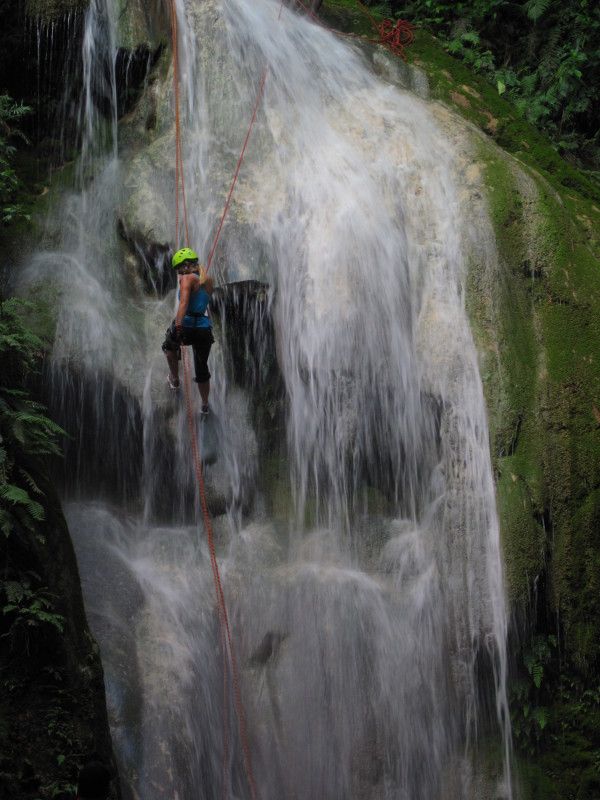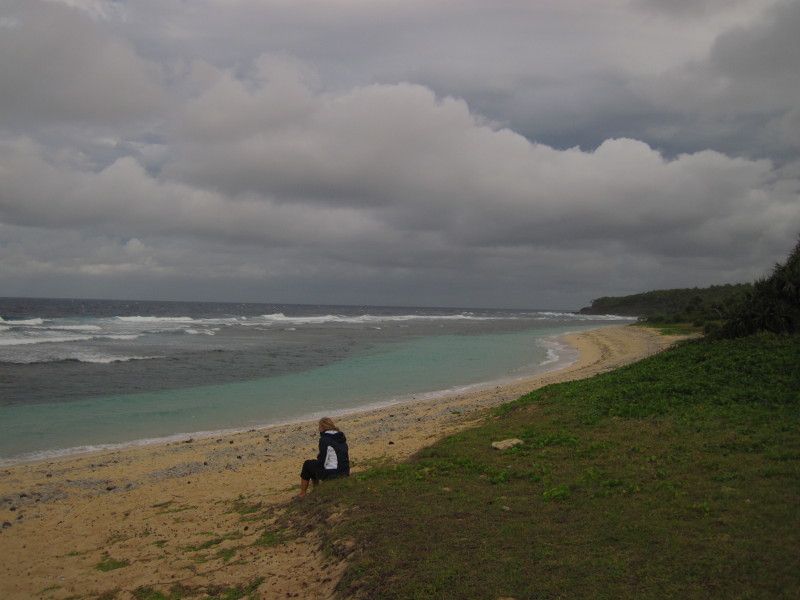Manageable, but less than ideal weather made for an uncomfortable
sail from Musket Cove Marina, Fiji to Port Resolution on the island
of Tanna, Vanuatu. We sailed into Port Resolution on a cold and rainy
morning. The hot springs that line the edges of the anchorage were
sending steam high into the air like a campfire. Ash rain pouring
from the sky coated the boat, and us, in a black soot.
Vanuatu is an archipelago made up of 83 islands. Only several are
inhabited by a population of 187,000 people. During WW2, Vanuatu was
an important US military base. Before the war, the people of Vanuatu
had very little connection with the Western world, which allowed
villages to stay relatively true to their traditional ways. In the
village, kids run around playing soccer, volleyball, and gardening.
Pieces of paper colored as flags of their favorite soccer clubs and
taped to sticks are carried around town, many kids were rooting for
Germany and Argentina in the World Cup. Giant banyan trees tower over
the small villages and well groomed vegetable gardens. Each member of
a village is considered keeper of part of the island. We met the
keeper of sharks and the keeper of banana trees. Brian decided he
would be the keeper of fish and Lauren would be the keeper of
seashells.
Brian was invited to a nakamal which is a kava drinking event, a
practice reserved for only men in Vanuatu. It is during nakamal that
the men discuss village issues, celebrate events and apparently
prepare for inter-island soccer matches. The men isolate themselves
during the evening from the rest of the rest of the village for weeks
at a time. The kava only comes out after all official matters are
settled. The kava preparation involves the younger boys actually
chewing the freshly harvested kava roots, spitting them onto a large
leaf, and extracting the juice with coconut husks. Water is then
added and the resulting concoction can be fairly potent and two
servings is more than enough. The kava in Vanuatu is much stronger
than that of Fiji or Tonga.
A white beach stretches along the south east side of the island.
While sitting in the sand watching the surf, we couldn't help but
understand how Grandpa Wargo learned to body surf in Vaniuatu during
the war.
A kastum village performed native dancing and singing for the World
ARC boats. The traditional dress for men is a penis sheath, a
covering made of leaves and straw. Women wear grass skirts, face
paint, and no top. The men, women, and children dance around in a
circle while singing joyous songs with no instruments. Their dance
and stomping feet could be felt through the rich volcanic soil.
One evening we made the 4 wheel drive trek up to an active volcano,
Mount Yasur. Our driver and guide, Paul and Sam took us up through
roads winding through steaming holes and black ash plains. At dusk,
the view of the active explosions was the highlight of the trip.
Plumes of red hot lava are violently spewed from the depths every few
seconds and the ground rumbles below your feet. Visiting the volcano
as truly an adventure experience there is no railing and you are a
foot away from falling into the lava pit. Several years ago, a
Japanese guy was killed by a car sized flying magma blob in the exact
place we stood.
One of the strange local beliefs we learned about in Vanuatu was the
John Frum group. Followers of this cult-like group believe that a man
named John Frum and his “Great Canoe” will one day come from the
US with worldly goods for them. Apparently, this started from a guy
named John that gave them supplies in the 1930's. His anticipated
return is celebrated on Friday nights
The island of Efate and Port Villa was our second stop in Vanuatu.
Brian did a wreck dive to a sunken tanker and another on a collection
of bommies . He came home with pictures of himself sitting on the
toilet of the wreck 40 meters below. On a tour of the island, we
visited the blue lagoon and took turns swinging off rope swings into
the brackish water. We also visited a village, primary school, tarro
farm, and several beaches. Just when you think you have seen it all,
we met the grandson of the man who has the largest WW2 Coke bottle
collection in the Pacific. After the war, the military supplies and
trash from the base was dumped into several harbors. Thousands of
coke bottles found their resting place at the bottom of Havana
Harbor. Pale blue sea glass scatters the beach, as pieces of the
bottles continue to wash ashore. Other items in his World War 2
collection included bomb tails, binoculars, propellers, and bullets.
The highlight of Port Villa was the afternoon we spent absailng the
Mele cascades waterfalls. After an 8 meter practice run, we were
ready for the two consecutive 50 meter drops. Feeding out lines as we
descended and the water rushed by you was a really neat feeling.
 |
 |
 |
 |
 |
 |


No comments:
Post a Comment